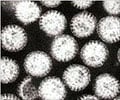A new study has claimed that the inbreeding does not lead to deformities in case of amphibians.
Focussing their research on salamanders, Purdue University researchers claimed that inbreeding has no part to play in the high incidence of malformation among amphibians in general. ccording to Rod Williams, assistant professor of forestry and natural resources, they examined 2,000 adult and juvenile salamanders and found that 8 percent had visible deformities, mainly consisting of missing, extra or dwarfed digits (equivalent to fingers and toes)."This is really the first study to test - and disprove - the hypothesis that inbreeding is responsible for malformations in salamanders," said Williams.
Usually, tiger salamanders return to the same pond throughout their lives to mate, just like many other types of amphibians
The researchers speculated that habitat fragmentation or other factors might increase the probability that related salamanders could return to the same spot and mate.
However, their study found animals' genetic backgrounds to be unrelated to deformation rates- deformed salamanders were no more inbred than normal individuals.
Lead author of the study, Andrew DeWoody said that the population proved to be quite diverse, in fact, with roughly twice as much genetic variation as most land animals.
Advertisement
"Amphibians are a good bio-indicator species - real canaries in the coal mine," said Williams.
Advertisement
DeWoody said that they still haven't figured out the reason for high rates of deformation in salamanders, frogs and other amphibians.
However, with inbreeding ruled out, he said that environmental factors like parasites, ultraviolet radiation and water pollution remain prime suspects.
"We've crossed out inbreeding as a possibility, an important step forward. But there's a lot of work yet to do," said DeWoody.
The study was recently published in the journal Biology Letters.
Source-ANI
RAS/L









